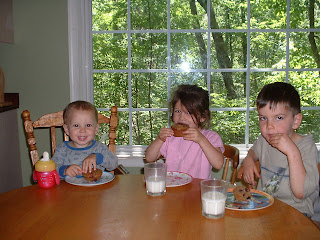
My soil is clay and full of rocks, discouraging to even the most avid gardener. My green-thumb sister tried planting cabbages in my backyard but gave up. After a couple disappointing summers, I turned to container gardening as both a creative outlet and means for food production. Container gardening is simpler – and more productive – than you may imagine.
There are many benefits to container gardening, especially for a beginner. It's easy to start small, with only a few varieties in several pots, and grow more each season without feeling intimidated by a large untamed garden plot. You can also start your plants inside late in the winter and move them back indoors after the summer, extending your growing season.
This spring, I felt very inspired and have started 150 seedlings as my container gardening project for the year. I planted tomatoes, peppers, eggplants, herbs and more. Peas and cucumbers will follow, but I'll start those later this spring in outdoor pots.
Want to try container gardening for yourself? Pick some seeds, find some containers, and get started!
Seeds
My favorite seeds are heirloom varieties, and I love the huge selection at Seed Savers. But really, any seeds will do, and organic varieties are widely available. Just avoid hybrid seeds in order to save the seeds from your plants each year. Choose several varieties, keeping in mind your family's preferences.
Containers
There is no need to spend a lot of money – or any money, if you're creative – on container gardening. This year, my containers are an eclectic group of nursery plant pots (saved by my sister from her home landscaping projects) old enamel pots (from a junk heap) and 5-gallon plastic pails someone discarded. To ensure proper drainage, drill several holes in the bottom of each container and put a layer of gravel or clay pot pieces under the soil.
 Soil
Soil
Use any combination of your native soil, potting mix, composted horse manure, chicken manure, and compost that is possible. Use a soil test kit to learn what your soil needs. If it is low in nitrogen, add a little chicken manure.
Plant Food
I prefer to avoid chemical fertilizers, so I use an organic sea mineral supplement to feed my plants. Also look for organic fertilizers and plant food in stores if your soil is not rich in nutrients. See minerals are an excellent way to add nutrients to the soil.
Container gardening really is that simple. Choose your containers, prepare them with proper drainage, mix and add your soil, plant your seeds ... and expect great things from your container garden. I can't wait to make a tomato salad from my garden's bounty.
Inspired? Pass it on! Share your container gardening plans (or tips) with other readers, below.
 Delicious Berry Muffins and raw milk!
Delicious Berry Muffins and raw milk!




